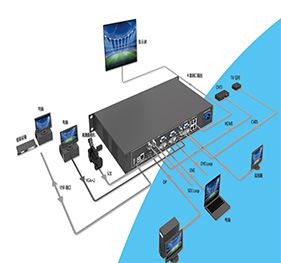Technical Support
Contact Us
Headquarters address:
5th building,Fulongte Technology park,
Huaxing road,Dalang,Longhua district,518109,
Shenzhen,Guangdong,China
Factory address:
5th building,Fulongte Technology park,
Huaxing road,Dalang,Longhua district,518109,
Shenzhen,Guangdong,China
Phone:
+86-755-29043232
Email:
ZBLED@zhongbo-gd.com
SKYPE:
vitaluo320
According to the failure analysis big data show, the cause of LED dead light may be more than 100 kinds. Today we only take LED light source as an example, from the five major raw materials of LED light source (chips, brackets, phosphors, solid crystal glue, packaging glue and gold wire ) to start part of the cause of the cause of death.
Chips
01. Poor anti-static ability of the chip
LED lamp beads antistatic index depends on the LED light-emitting chip itself, and the packaging material is expected to be basically irrelevant to the packaging process, or that the impact of factors is very small, very subtle; LED lights are more vulnerable to electrostatic damage, which has two pin spacing Relationship, LED chip die spacing is very small two electrodes, usually within a hundred microns, while the LED pin is about two millimeters, when the electrostatic charge to be transferred, the greater the spacing, the easier to form a large potential difference , which is the high voltage. Therefore, after being sealed into LED lights, it is often more prone to electrostatic damage.
02, chip epitaxy defects
During the high-temperature growth process of LED epitaxial wafers, the substrate, the residual deposits in the MOCVD reaction chamber, the ambient gas, and the Mo source all introduce impurities that will infiltrate into the epitaxial layer and prevent the gallium nitride crystals from nucleating and forming various All kinds of epitaxial defects will eventually form tiny pits on the surface of the epitaxial layer, which will also seriously affect the crystal quality and performance of the epitaxial wafer material.
03. Remnants of chemical substances on the chip
Electrode processing is the key process for manufacturing LED chips, including cleaning, evaporation, yellow light, chemical etching, fusion, and grinding. It will come into contact with many chemical cleaning agents. If the chip cleaning is not clean enough, harmful chemicals will remain. These harmful chemicals will electrochemically react with the electrode when the LED is energized, resulting in the appearance of dead lights, light decay, darkness, and blackening. Therefore, it is very important for the LED packaging plant to identify the residue of the chip chemicals.
04. Damage to the chip
Damage to the LED chip directly leads to LED failure, so improving the reliability of the LED chip is crucial. During the evaporation process, the spring clips are sometimes used to fix the chip, so a pinch mark may be generated. If the development of the yellow light is not complete and there is a hole in the mask, there will be more residual metal in the light emitting area. In the first-stage manufacturing process, crystal grains, electrodes, carriers, carriers, etc., must be used for each process such as cleaning, vapor deposition, yellow light, chemical etching, fusing, and grinding. Therefore, the crystal electrode may be scratched.
The effect of the chip electrode on the solder joint: The chip electrode itself is not deposited reliably, causing the electrode to fall off or damage after the wire bond; the chip electrode itself has poor solderability, which can lead to solder ball welding; improper chip storage can cause oxidation of the electrode surface and surface contamination Etc., slight contamination of the bonding surface may affect the diffusion of metal atoms between the two, resulting in failure or welding.
05. Incompatibility between chip and light source material of new structure technology
The new structure of the LED chip electrode has a layer of aluminum. The role is to form a mirror in the electrode to improve the light extraction efficiency of the chip, and secondly to reduce the use of gold when evaporating the electrode to a certain extent to reduce the cost. However, aluminum is a relatively active metal. Once a packing plant has strict control over incoming materials, using a glue containing chlorine exceeding the standard, the aluminum reflective layer in the gold electrode reacts with chlorine in the glue, and corrosion occurs.
LED bracket
06, silver plating too thin
Existing LED light sources on the market choose copper as the base material of the lead frame. In order to prevent oxidation of copper, the surface of the stent is generally plated with a layer of silver. If the silver plating layer is too thin, the brackets tend to yellow during high temperature conditions. The yellowing of the silver plating layer is not caused by the silver plating layer itself, but is affected by the copper layer under the silver layer. At high temperatures, copper atoms diffuse and penetrate the surface of the silver layer, making the silver layer yellow. The oxidability of copper is the biggest drawback of copper itself. When copper is in an oxidized state, the thermal and thermal performance will be greatly reduced. So the thickness of the silver plating layer is crucial. At the same time, both copper and silver are susceptible to corrosion by various volatile sulfides and halides in the air, causing their surfaces to darken and discolor. Studies have shown that discoloration increases the surface resistance by about 20 to 80%, and the power loss increases. As a result, the stability and reliability of the LED are greatly reduced, even leading to serious accidents.
07, silver plating curing
The LED light source is afraid of sulfur. This is because the sulfur-containing gas passes through the porous structure of the silica gel or the gap between the holder and the silver plating layer of the light source. After the LED light source undergoes a vulcanization reaction, the functional area of the product will be blackened, the luminous flux will gradually decrease, and the color temperature will shift significantly; the vulcanized silver will increase in temperature as the temperature rises. In the course of use, electrical leakage may occur; more serious The condition is that the silver layer is completely eroded and the copper layer is exposed. Since the two gold solder joints are attached to the surface of the silver layer, when the silver layer in the functional area of the stent is fully sulphided and eroded, the gold ball appears to fall off and a dead lamp occurs.
08, silver plating oxidation
The initial diagnosis of the blackening of the LED revealed that the more difficult the sulfur/chlorine/bromine element was, the harder it was to find the LED. However, the silver light from the LED light source showed obvious signs of blackening, which may be related to the oxidation of silver. Because the presence of oxygen in the air environment, sample surface adsorption, and encapsulation of organic substances interferes with the determination of the test results, the determination of the blackening of the oxides requires the use of SEM, EDS, micro-infrared spectroscopy, XPS, etc., as well as light, A series of reliability comparison experiments such as electricity, chemistry and environmental aging are combined with professional detection knowledge and plating knowledge for comprehensive analysis.
09, poor plating quality
The quality of plating is mainly determined by the crystal structure of the metal deposition layer. In general, the finer the crystal structure, the denser and smoother the coating, and the higher the protective performance. This crystalline fine deposit is called a "microcrystalline deposit." A good plating layer should be fine, smooth, uniform, and continuous in the coating layer. No contaminants, chemical residues, spots, black spots, burnt, rough, pinholes, pits, cracks, delamination, blistering, Skin wrinkles, peeling off of the coating, yellowing, crystal coating, local non-plating defects.
In the electroplating production practice, the thickness of the metal coating and the uniformity and integrity of the coating are one of the important indicators for checking the quality of the coating, because the protection performance and porosity of the coating are directly related to the thickness of the coating. The special change is the cathode coating. As the thickness increases, the protective performance of the coating also increases. If the thickness of the coating is not uniform, the thinnest place will be destroyed first, and the rest of the coating will lose its protective effect.
The porosity of the coating is high, and corrosive gases such as oxygen pass through the pores and enter the copper matrix.
10. Organic pollution
Because the electroplating process uses a variety of organic-containing syrups, the silver plating layer is not clean or uses poor quality and deteriorating syrups. Once these residual organic materials are in a light-lit environment, the light, heat, and electricity Under the effect of organic substances, redox and other chemical reactions may cause the surface of the silver-plated layer to discolor.
11, outlet material
The material of plastic is the key to the heat conduction of the LED package bracket. If the PPA bracket is used as a material, the plastic properties of the PPA will be reduced, resulting in the following problems: poor high temperature tolerance, easy deformation, yellowing, low reflectivity; high water absorption The stent will cause dimensional changes due to water absorption and mechanical strength to drop; poor adhesion to metal and silica gel, more pick rubber, does not match many silicones. These potential problems make it difficult for the lamp beads to be used at slightly higher power. Once the power is beyond the power range, the initial brightness is very high, but the attenuation is very fast and the lamp is dark for months.
Phosphor
12, phosphor hydrolysis
Nitride phosphors are easily hydrolyzed and fail.
13, phosphor self-heating mechanism
The elf-heating mechanism of the phosphor makes the temperature of the phosphor layer higher than that of the LED chip p-n junction. The reason is that the conversion efficiency of the phosphor cannot reach 100%, so part of the blue light absorbed by the phosphor is converted into yellow light, and in the high light energy density LED package, another part of the light energy absorbed by the phosphor becomes heat. Since the phosphor is usually mixed with silica gel, and the thermal conductivity of the silica gel is very low, only 0.16 W/mK, the heat generated by the phosphor will accumulate in a small local area, causing local high temperatures, and the optical density of the LED The larger the phosphor, the greater the amount of heat generated by the phosphor. When the temperature of the phosphor reaches above 450 degrees Celsius, carbonization of the silica gel near the phosphor particles occurs. Once there is carbon black in a certain place, the light conversion efficiency is lower, the area will absorb more light energy emitted by the LED and convert more heat, and the temperature will continue to increase, making the area of carbonization larger and larger.
Solid crystal glue
14, silver plastic peel
The base of the conductive silver paste is an epoxy resin material, and the thermal expansion coefficient is much larger than that of the chip and the bracket. In the environment where the lamp beads are used in the cold and heat shock, the stress will be generated due to heat, and the effect will be more severe in the environment with severe temperature changes. To exacerbate, the colloid itself has tensile fracture strength and elongation rate. When the tensile force exceeds, the colloid will crack. The adhesive of the solid crystal is peeled at the interface, and the heat dissipation is rapidly deteriorated. The heat generated by the chip cannot be derived, and the junction temperature rapidly increases, which greatly accelerates the process of light decay.
15, silver glue layering
The silver powder particles are dispersed in the slurry system in a suspended state. Due to the density difference, charge, cohesion force, acting force, and the structure of the dispersion system, silver powder and the matrix are often influenced by many factors, such as the phenomenon of sedimentation and delamination of the silver powder, if the sedimentation occurs. The sag will occur when the product is hung, the thickness of the coating will be uneven, and even the physicochemical properties of the coating will be affected. The delamination will also affect the heat dissipation, adhesive strength and electrical conductivity of the device.
16, silver ion migration
A customer uses silica gel encapsulation, and the vertical flip-chip light source with conductive silver paste is leaking. The cause of the fault is analyzed by analyzing the defective lamp beads. An abnormal silver element is detected on the side of the chip, and silver particles can be observed from the bottom positive silver adhesive region. The dendrite-like extension morphology gradually spreads to the vicinity of the P-N junction side of the upper chip, and therefore it is judged that the defective lamp-bead leakage failure is likely to be caused by ion migration of the silver ions from the silver-silk paste on the chip side. The silver ion migration phenomenon is gradually formed during the use of the product. As the migration phenomenon increases, eventually the silver ions will conduct the P-N junction of the chip, causing a low-resistance path on the side of the chip, resulting in abnormal leakage current of the chip. In this case, the chip may even be short-circuited. There are many reasons for the migration of silver, but the main reason is that silver-based materials are damp. After the silver paste is damped, the invading water molecules ionize silver and migrate along the sides of the chip from the bottom-up vertical direction electric field. Therefore, it is recommended that customers carefully use silica gel encapsulation, silver glue bonding vertical flip chip lamp beads, the use of gold and tin eutectic welding method to fix the chip on the bracket, and strengthen the waterproof characteristics of the lamp.
17, solid crystal glue does not dry
The silicone curing agent for LED encapsulation contains a platinum (platinum) complex, and this platinum complex is very easy to poison. The poisoning agent is any one of nitrogen (N), phosphorus (P), and sulfur (S). Once the compound is poisoned by the curing agent, the curing of the silicone is incomplete, resulting in a high linear expansion coefficient and an increased stress.
Packaging glue
18, glue heat resistance is poor
According to tests, pure silica gel begins to crack at 400 degrees, but the heat resistance of the modified silica gel added with epoxy resin is pulled down to the level of the epoxy resin, when this modified silica gel is applied to high-power LEDs or high temperature In the environment, colloidal yellowing and cracking of dead lights will occur.
19, glue does not dry
The silicone curing agent for LED encapsulation contains a platinum (platinum) complex, and this platinum complex is very easy to poison. The poisoning agent is any one of nitrogen (N), phosphorus (P), and sulfur (S). Once the compound is poisoned by the curing agent, the curing of the silicone is incomplete, resulting in a high linear expansion coefficient and an increased stress.
Substances that are susceptible to silicone poisoning include: organic compounds containing N, P, and S; heavy metal ion compounds such as Sn, Pb, Hg, Sb, Bi, and As; and organic compounds containing unsaturated groups such as acetylene groups. Pay attention to the following materials:
Organic Rubber: Sulphur vulcanizates such as gloves
Epoxy resin, polyurethane resin: amine, isocyanate curing agent
Synthetic silicone RTV rubber: in particular using Sn catalysts
Soft Polyvinyl Cyanide: Plasticizers, Stabilizers
Flux
Engineering plastics: flame retardants, heat-resisting agents, UV absorbers, etc.
Silver plated, gold-plated surface (plating solution during manufacture is the main reason)
Degassing by Solder Register (induced by silicone heat curing)
20, the coefficient of expansion of the packaging rubber line is too large
In the hot and cold impact environment of the lamp beads, the stress will be generated due to the heat problem, and the effect will be more intensified in the environment with severe temperature changes. The colloid itself has tensile fracture strength and elongation rate. When the tensile force exceeds, the colloid is Cracked.
21, glue contains chlorine
However, at present, the domestic epoxy resin production enterprises generally have a small production scale, the management mode and the production process are backward, and the degree of automation of the operating machinery is not high, which makes it difficult to guarantee the parameters of the epoxy resin. The production of low-quality epoxy resin is related to the current status of the industry in China, and the industry is in urgent need of upgrading.
The chlorine in the epoxy resin not only causes chlorination corrosion to the stent silver plating layer, alloy wire or other active metal and chip electrodes (aluminum reflective layer), but also can complex with the amine curing agent and affect the curing of the resin. Chlorine content is an important property index of epoxy resin. It refers to the mass fraction of chlorine contained in epoxy resin, including organic chlorine and inorganic chlorine. Inorganic chlorine affects the electrical properties of the cured resin. The content of organic chlorine marks the content of that part of the chlorohydrin group that does not initiate ring-closing reaction in the molecule, and its content should be reduced as much as possible, otherwise it will also affect the curing of the resin and the properties of the cured product.
Gold Line
22, copper alloy, gold-clad silver alloy wire, silver alloy wire instead of gold wire
The gold wire has the advantages of large electrical conductivity, good thermal conductivity, corrosion resistance, good toughness, and excellent chemical stability, but the price of the gold wire is expensive, resulting in high packaging cost. In the periodic table, transitional metal elements
Service Hotline: +0086-13715391977 +0086-755-29043232 Email: ZBLED@zhongbo-gd.com





















